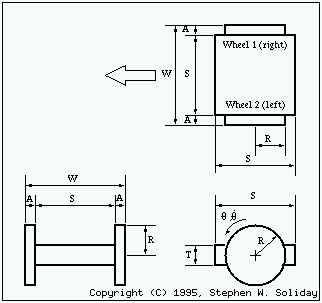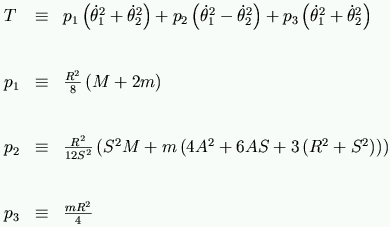

The chassis for the mobile robot consisted of two independent drive motors. Control inputs from the navigation system consisted of a desired velocity and a heading relative to the current vehicle heading. The torque controller translated these controls in to motor torque. sensors of limited range were used to determine obstructions.
To computationally model the robot. A simple physical model was developed. Differential equations of motion were developed using Lagrange's Equations of Motion.
The two degrees of freedom for the wheels were transformed into two degrees of freedom for the vehicle's position. (Forward velocity & Change in heading)

These two contraints were used to build a kinetic energy equation.
The chassis slabs Ke:


and after some tedious algebra the Ke for the robot was:

The constant sub-expresions p1, p2 & p3 where factored out and precomputed to enhance the speed of the numerical calculations.
Because the simulation was performed assuming a level surface there is no potential energy term.
The acceleration of the wheels as a function of torque was determined by puting the kenetic energy term into lagrange's Equations of motion.

The two Lagrange equations where solved independently for the two second order terms. A new set of constant subexpresions were factored out and the resulting state equation was found:


This module is part of a robotics simulation that was demonstrated in a Master's Thesis entitled: